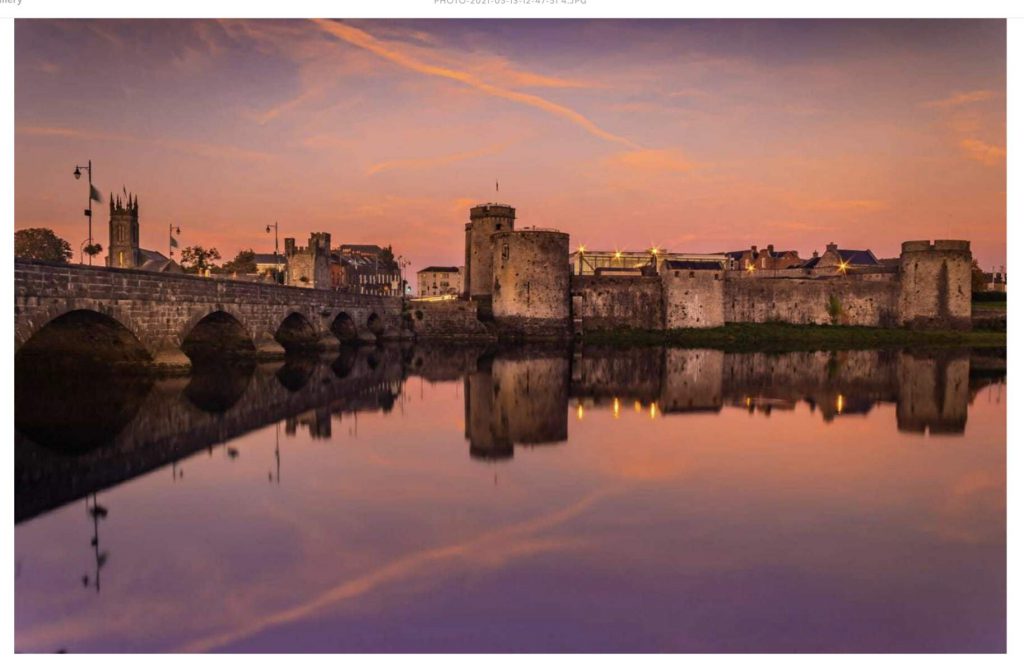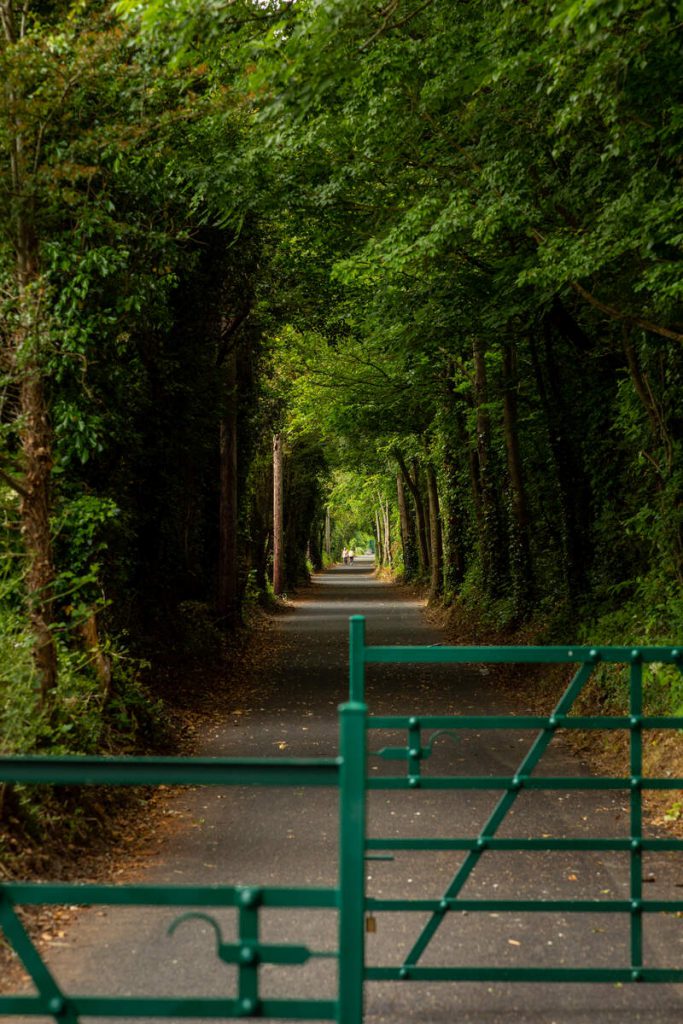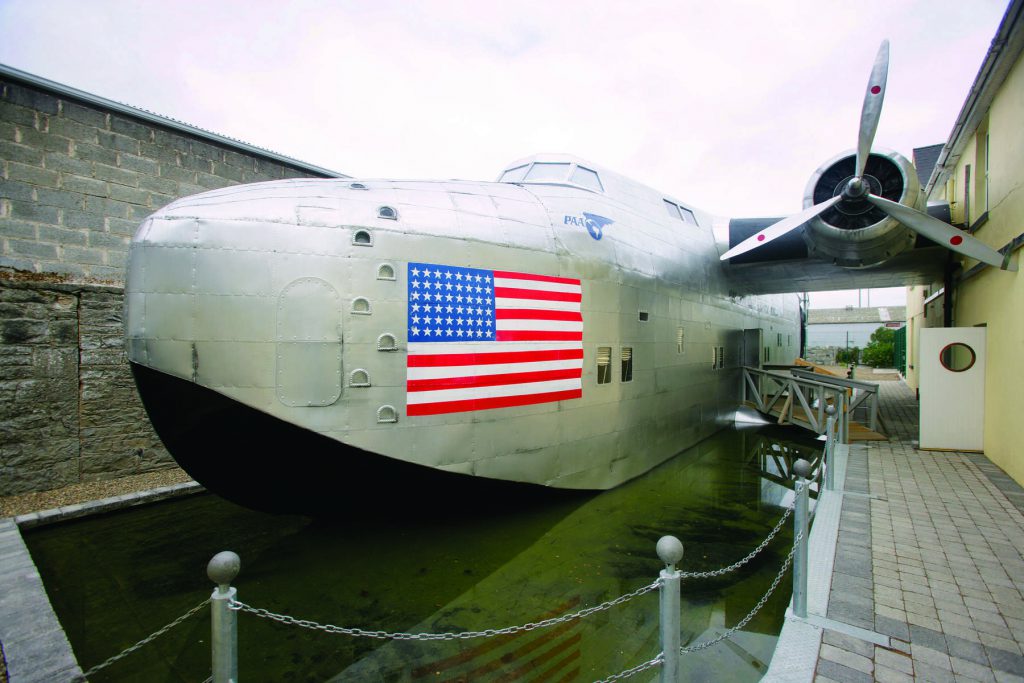
By Barry Coughlan
Adare is already on the Irish tourism hit list, but in 2027 it will move firmly onto the world destination stage when the village and surrounding area make the headlines through the hosting of the prestigious Ryder Cup at Adare Manor and Golf Resort.
This event will be one of the biggest money spinners ever for the Irish tourism industry, and much of the benefit will be in the Adare and greater Limerick region. Conservative estimates are that the Ryder Cup will attract some 300,000 visitors to Ireland, a decent percentage from the USA, and will contribute in excess of $250 million to the economy.
That’s a bit down the line, but in any appreciation of Limerick as a tourism destination, Adare has to be one of the front-line beauty spots in the county, quite apart from the magnificent Adare Manor and Golf Resort which is arguably the beating heart of the village.
I was fortunate to attend a family wedding in the venue a few years ago and got to stay there as well. It should be on any Irish tourism bucket list.

Just 10 miles south of Limerick city, it is renowned as one of Ireland’s prettiest villages; it has won many awards and is designated as a Heritage Town, thanks to a picture-postcard main street of thatched cottages and medieval buildings plus archaeological remains with a history dating back to 1200 AD.
There is an equestrian center located at Clonshire and the village is home to a number of world-renowned stables. The church on the main street is the only Trinitarian Monastery in Ireland; which was founded in 1230 and restored in the 1800s.
Further information is available at www.adarevillage.com.
Today, Limerick is a major Irish city and is renowned in the world of sport for excellence in Gaelic games and rugby. It is also a thriving center for soccer, hockey and cricket.
These days, interest is focused heavily on the Limerick hurling team, recently crowned All Ireland Champions for the third year in succession.
Thomond Park, home of Munster rugby, is undoubtedly the iconic stadium in the city. Munster has another smaller base in Cork, has twice been European Champions and twice beaten finalists through the glory years between 2000 and 2009. Thomond Park is the place that all the top club and national teams together love and hate to visit; it’s a place where Munster consistently damage reputations.
The population of Limerick has grown and attracts thousands of students every year to the University of Limerick. Its proximity to Shannon Airport in neighboring County Clare has identified it as a must-visit county and is hugely popular with visitors from the USA.
This Wild Atlantic Way gateway city is at the estuary of the spectacular River Shannon and it has developed its tourism products in line with growing visitor interest.
There are local must-see attractions such as the Hunt Museum, the Limerick City Gallery of Art, King John’s Castle and more that you will find at www.limerick.ie.
The Hunt Museum is a jewel in the crown; it exhibits one of Ireland’s greatest private collections of art and antiquities, dating from the Neolithic to the 20th Century, including works by Renoir, Picasso and Yeats. It reflects the diverse tastes and interests of the two people who formed it, John and Gertrude Hunt.
There are artefacts from Greece, Rome, Egypt and the Olmec civilization. There is also an important collection of Irish archaeological material ranging from Neolithic flints and Bronze Age material, including a Bronze Age shield and cauldron, to later Christian objects such as the unique 9th century Antrim Cross.
One of the strengths of the collection is the medieval material, which include statues in stone and wood, painted panels, jewelry, enamels, ivories, ceramics, crystal and crucifixes.
18th and 19th century decorative arts are also represented with fine examples of silver, glass and ceramics. Artists’ works in the collection include Pablo Picasso, Pierre Auguste Renoir, Roderic O’Conor, Jack B. Yeats, Robert Fagan and Henry Moore.
King John’s Castle is probably Limerick’s most iconic landmark where visitors will learn stories of ruthless King John, of the noble knights and the fighting Irish natives. It’s at the heart of the city’s medieval quarter and tourists will experience the story of 800 years of dramatic local history.
One of the must-do activities during any visit to the Castle is to climb the ancient towers for spectacular views across the River Shannon and the rooftops of Limerick City. The view from the top is dramatic.
While much of Limerick’s Viking past has been washed away, the city has numerous examples of medieval castles and cathedrals, and elegant Georgian buildings adorning its streets.

Out and about, the 25 mile Greenway travels through captivating Limerick countryside and it offers day-trippers and families the option to explore rural Limerick by cycling, running or walking.
Following the old Limerick to Kerry railway line, the Greenway seamlessly links the west Limerick landscape with towns and villages located in some of the country’s most historic sites.
The largest mountain bike park of its kind in Ireland, Ballyhoura is home to a wide range of trails to suit all abilities.
One could also uncover a Neolithic past in Lough Gur, home to the largest stone circle in Ireland and also Western Europe. History and myths abound in this mystical place.
The west county Limerick town of Foynes, set on an island and in a harbor on the southern shore of the Shannon Estuary is significant in that it’s a major deep water seaport, with capacity for very large vessels.
Although a relatively new town dating from the mid 1900s, Foynes has a rich maritime and aviation history and was once the last port of call on the eastern shore of the Atlantic for flying boats as it became the centre of the aviation world from 1939 to 1945.

Today Foynes has a world class Flying Boat Museum which exhibits a full size replica of the B314 flying boat, and the town is also the invention place of the world famous Irish Coffee, which was first made here in 1942 for flying boat passengers.
Visitors can board the only B314 flying boat replica in the world. All the commercial flying boats landing in Foynes featured upscale amenities, but the B314 had true ocean liner luxury. A one-way ticket from New York to Foynes at the time cost $375.
In 1968, famed actor Maureen O’Hara married famed aviator Brigadier General Charles Blair, who flew flying boats between the USA and Foynes in the years between 1942 and 1945.
Blair died tragically in a plane crash in 1978, but his widow always remained strongly connected to his legacy. Just a little more than a decade after her husband’s untimely death, O’Hara cut the ribbon at the opening of the Foynes Flying Boat & Maritime Museum on 8th July 1989, and remained a patron of the museum until her own death in 2015.
